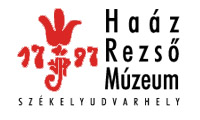Kovács Petronella (szerk.): Isis - Erdélyi magyar restaurátor füzetek 8-9. (Székelyudvarhely, 2009)
Puskás Éva: A Szatmári Római Katolikus Egyhámegye kulturális javaainak megmentése
“hope chest” had already been used when she got it. It is known from a letter that her daughter used it as a laundry chest, while her grandson carried it down from the loft to the flat as a family keepsake. Most of the Transylvanian Armenians were tradesmen in the 18th century, and they frequently travelled. So, the chests could initially be travelling chests. The fact that they did not have feet and they could be closed with two hasps beside the central lock and that dust bands were applied to the lids from three sides corroborate this. The length of the chests varies between 78 cm and 128 cm. The microscopic analysis of the wood samples taken from three chests along injuries determined the raw material as Picea abies (L.) Karst., native in Transylvania. According to macroscopic traits, the rest of the chests were also made of spruce. The sides of the chests were prepared from 30-50 cm wide planks depending on the height of the items. Their convex lids were built from two or three dowelled planks and they were attached to the two sides of the lids with dowels. The groove trimmed in the edges of the lids exactly fitted the one in the upper rims of the bodies of the chests when the lids were closed. The animal species from which the leather covers of the chests came was identified by microscopic analyses. The lids, the fronts and the backs of 6 chests were covered with calf-skin, 3 with cattle hide and one with sheepskin. Hairy calf-skin was applied on one chest, another one was covered with hairy sealskin. The shorter sides of 7 chests were covered similarly to the other sides, while sheepskin was applied on the sides of the chests covered with hairy skin. The analyses have revealed that the covers of the chests are similar to the ones described by Krtinitz, although the application of sealskin is not characteristic. The fibres of the samples taken from the brownish leather covers blackened when 1 % watery solution of iron(III)chloride was dripped on them, which proves that they were vegetable-tanned. The analysis of the tanning material of the fibres of the hairy-skins was carried out by alizarin test. Both the hairy calf-skin and the hairy sealskin showed red colour reaction, so they were tawed with alum. The samples taken from the metal straps and the ornaments were examined with SEM-EDS. It could be determined that four of the chests were decorated with motives made of tinned iron, six with motives made of brass and two other chests with motives made both from tinned iron and brass. Most of the examined chests were lined with printed 80-82 cm wide cloths, two objects with white linen. The fibres taken from the threads of the linings showed the growth nodules of flax/hemp under a microscope. The cloths were prepared from Z-twisted threads by plain weave. The density of the warp threads was 10-14/cm2 in average, while that of the weft threads was 8-13/ cm2. The cloths are decorated with motives of small flowers, bunches of flowers and ribbons. They were generally prepared in three colours with direct printing. The characteristic marks of block printing can be seen on a few ornaments. The printed cloths could be tapestry. Judged from their patterns, they were probably imported to Transylvania. The elements of the drawers were covered with paper. The pieces decorated with wavy lines and small patterns are coloured paper prepared with block printing. The pieces decorated with larger flowers, could, however, be tapestry. The piece depicting a sea scene was probably tapestry, which became fashionable in the 19th century. The samples taken from the paper cover of four drawers were analysed. The macerates of these contained flax/ hemp fibres beside each a cotton fibre and also contained each a straw fibre. This is, however, not real straw paper as the proportion of straw to flax/hemp is negligible. According to Krtinitz, the lining of travelling chests was glued to the wood with flour-paste or starch, while the leather cover was only nailed. In contrast, traces of adhesive could be seen on the wood bases of certain chests where the leather cover was injured. The microscopic analysis of the samples taken from the adhesive on the outer leather-covered and inner linen-coated sides of two chests demonstrated the combined presence of starch and animal glue. The examined chests were prepared in a period of 28 years. The similarities of their elaboration and the ornaments imply that they could be made in the same workshop. They are perhaps items characteristic of a region or, they were fashion items that were popular in a broader area but only a few representatives have been preserved from them. Petronella Kovács DLA Wood and furniture conservator Head of Department of Conservation Training and Research Head of Faculty of Applied Arts Object Conservation Hungarian National Museum Hungarian University of Fine Arts Budapest Phone: +36-1-323-1423 E-mail: kovacs.petronella@gmail.com 189
